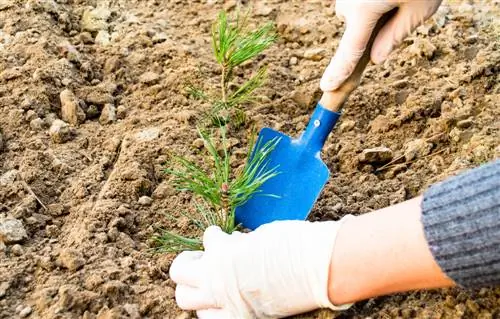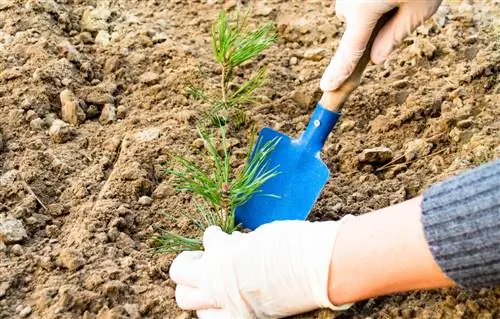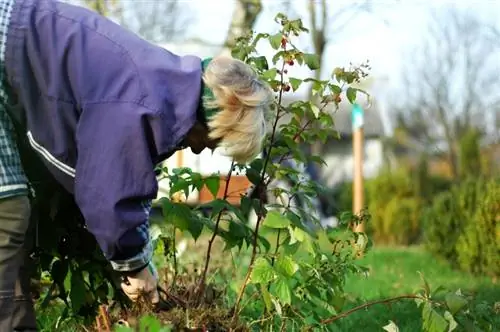- Author admin [email protected].
- Public 2023-12-16 16:46.
- Last modified 2025-06-01 06:02.
Surely you know the saying “You don’t transplant an old tree”. There's something to it - old, large trees are actually harder to move than young ones. But even if such a project is not without risk, it is still better than alternative felling.

How to successfully transplant conifers?
To successfully transplant a conifer, prepare the root ball a year in advance by digging a trench and root topping. Replant the tree in August or September with a root ball dug and water thoroughly to encourage establishment.
Transplanting requires careful preparation
Especially older conifers that have been in their location for longer than three to five years require careful preparation before moving. As early as August of the previous year, a trench about 50 centimeters deep must be dug around the tree, with a radius of at least 30 centimeters - and significantly more, the older and larger the tree is. Then fill the trench with mature compost or loose, good garden soil. This measure cuts the roots and ensures that a more compact root ball develops by the following year. This in turn makes it easier to move and then grow the tree.
Transplanting a coniferous tree - this is how it works
A year later, preferably in August or September, you can finally transplant the tree. Proceed as follows:
- Tie the branches together with rope to prevent them from breaking.
- Now dig the trench again.
- Cut any existing roots with a sharp spade.
- Roots running downwards should also be cut.
- To do this, drive the spade into the ground at an angle downwards.
- Now loosen the root ball using a digging fork.
- Lift out the tree including the root ball.
- Have at least one other person help you.
- The new planting hole should be about twice as large as the root ball.
- Loose the soil well - even at the bottom of the planting hole.
- Mix the excavated material with compost and horn shavings (€52.00 on Amazon).
- Pour the planting hole full of water and wait until it seeps away.
- Now plant the tree again.
- Fill in the soil and tamp it down well.
- Water abundantly.
- Cover the tree disc with a layer of mulch, such as bark mulch, compost or lawn clippings.
What to do if the needles turn yellow / brown?
If the needles turn yellow or brown after transplanting, then there is most likely an imbalance between the reduced root mass and the above-ground parts of the plant. These can no longer be adequately supplied with fewer roots. Pruning can help, but is not advisable for every conifer.
Tip
Thorough watering is extremely important in the weeks after transplanting to ensure the roots receive enough moisture. They cannot yet absorb the water from the ground themselves.






